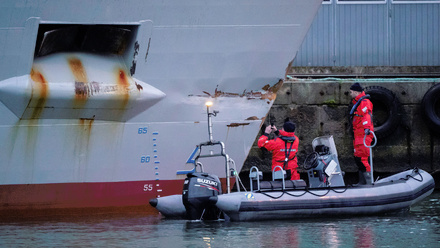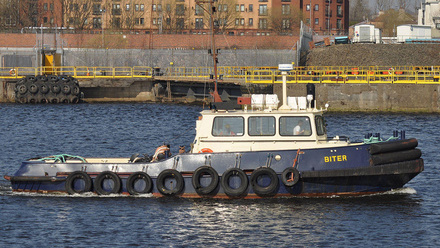Fatigue management discussed at Annual Conference
IMarEST’s yearly event, bringing together members to debate the future of shipping, enjoyed an early highlight.
Just over an hour into IMarEST’s Annual Conference - Future of Ships, Shipping and Environmental Sustainability - the Marine Accident Investigation Branch (MAIB) presented a session on fatigue and its significant role in incidents at sea.
Led by Simon Graves, Principal Inspector of Accidents at MAIB, a series of fatigue-induced groundings and sinkings were explored, including Jambo (2003), Danio(2013), Louisa (2016) and Alfred (2022).
“A significant amount of accidents we investigate involving fatigue are on fishing vessels,” cited Graves, indicating the loss of money could increase the chances of tiredness.
Louisa in 2016 was one such accident, and one that resulted in the death of the skipper and two crewmembers.
“Louisa’s crew had been fishing continually for four days, working approximately 20 hours per day,” explained Graves. “Instead of managing work routines to prevent fatigue and so ensure adequate levels of safety were maintained, the skipper worked the crew and himself to a state of tiredness such that the safety of the vessel and its crew were compromised.”
Work patterns clearly abused in this scenario can also be dangerous with a stricter schedule, such as the 6-on, 6-off (six days on, followed by six off) work pattern employed in Graves’ first example of general cargo vessel Jambo (2003).
“The pressure was on to keep the work going, building on top of the 6-on, 6-off schedule; this guy was tired,” lamented Graves, highlighting how the chief officer increased his exhaustion with “extra working duties when in port”.
Lessons not being learned
In 2020, the World Maritime University produced its annual report where fatigue was addressed, and it found several issues with the industry’s approach to ensuring the wellbeing of its workers, not least the commercial competition found in fishing.
Also noted were the deliberate ignorance of the detailed principles for minimum safe manning, the imbalance between personnel and workload, and the inability to enforce existing rules.
Guidelines, such as those from the International Convention on Standards of Training Certification and Watchkeeping for Seafarers (STCW) and the Marine Labour Convention (MLC), are in place to reduce accidents due to fatigue.
In the latter, it is stipulated that ‘Standard working hours are 8 hours per day, with one day of rest per week and additional rests on public holidays.’ Yet, even if these rules are followed, other factors are often ignored.
“They don’t address other fatigue factors including age, stress, circadian rhythms and medical conditions. They all build into a framework of fatigue,” said Graves.
To highlight this, the example of passenger ferry Alfred saw how the master experienced overtiredness just after lunch (the mid-afternoon circadian low) and while sitting on a warm, sunlight bridge back in 2022.
"Fatigue management is all about actively understanding the causation of fatigue and what contributes to it, and also the practices and principles that help mitigate fatigue,” Graves concluded.
“Depression, medical conditions, alcohol abuse - they all feed into it. Which is why as an industry, we would be better off focusing on all the factors that feed into fatigue [rather than just tiredness].
“Is the maritime industry learning from the past? It is our view that we are not learning from the accidents in the past.”
Elsewhere at the conference, the successful future of shipping was discussed in a series of engaging presentations, including future clean fuels, maritime cybersecurity, floating wind turbines, and how warships can achieve net zero.
The next IMarEST Annual Conference will take place in 2025.
Join IMarEST’s Human Element Special Interest Group to discuss this and associated topics.
Image: Simon Graves during his presentation; credit: IMarEST/Smile Photography.
Tell us what you think about this article by joining the discussion on IMarEST Connect.






